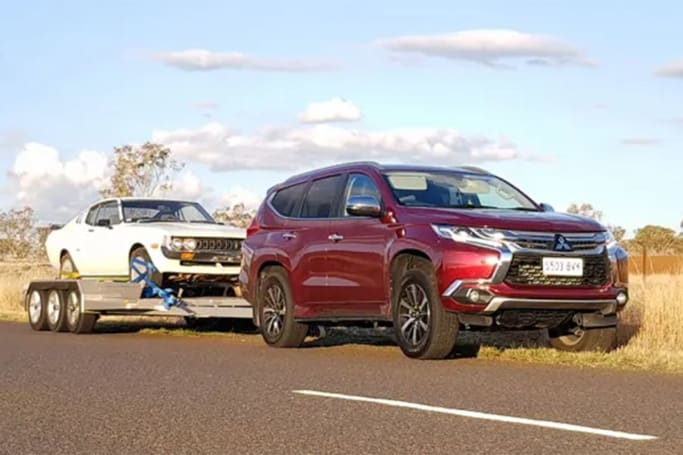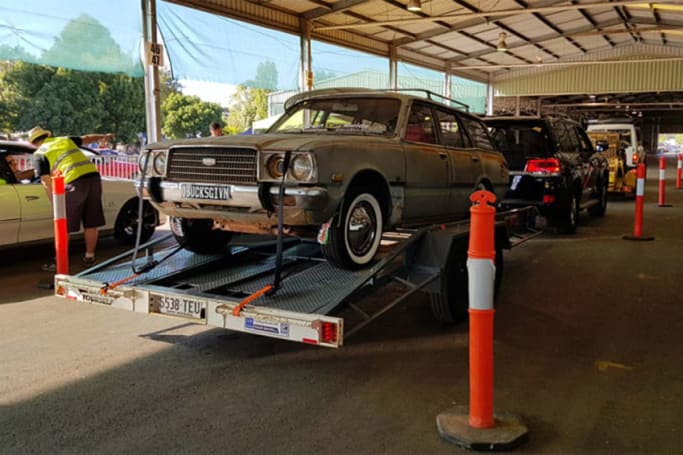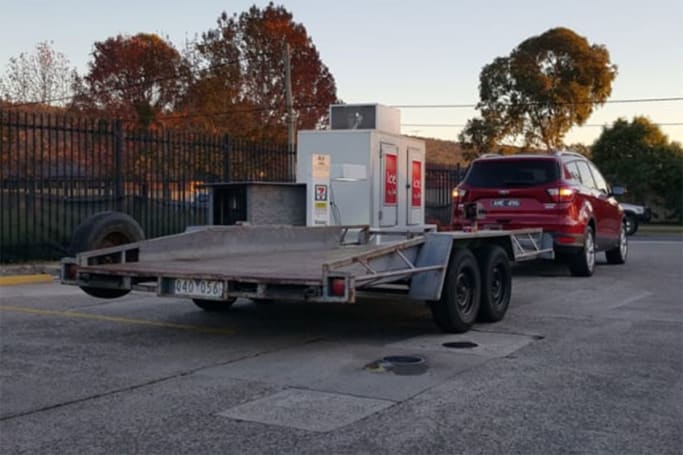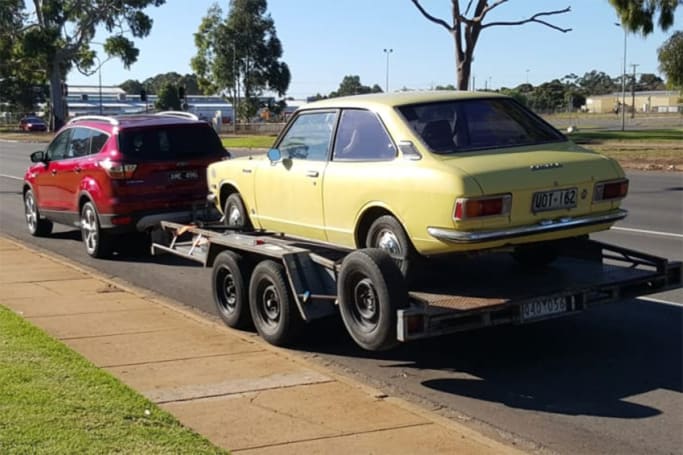
Are wheel spacers legal in Australia?
Are wheel spacers legal in Australia? No, wheel spacers are not legal in...
Browse over 9,000 car reviews

Moving a non-working car to a place to be worked on or simply stored out of the way, involves towing it. If the distance to be covered is the length of your suburban driveway and the vehicle rolls, you can get away with using a piece of tow-rope or tow straps and towing (or dragging) the car at super-low speeds with somebody inside the towed car to operate the steering and brakes.
But if you’re towing a car any distance, or it has no steering or brakes, then a trailer is what you need to do the job safely and efficiently. How to tow a car with another car is not something you’ll be taught at school, so here’s our quick towing guide.
As well as a vehicle capable of safely hauling the weight of the trailer and towed load, car towing also requires a trailer that is physically big enough to accept the car you want to move, as well as rated for the mass of the load.
Renting a trailer is one way to achieve this, but be aware that the renting company often won’t ask what you intend to tow. So just because they’ve taken your money, don’t assume that the trailer you have is big enough to do the job legally.
The best advice it to choose the biggest car trailer the rental firm has available. Don’t forget that the renter won’t supply the securing equipment, either; you’ll need to provide your own straps and ropes.

The same goes for choosing a car to do the actual towing. The best towcar is one that is big, powerful and heavy. A big engine with lots of torque – turbo-diesels are great for this – and a vehicle that weighs at least as much as the car and trailer combination you’re towing – like a full-sized 4X4 – is a great way to go.
Towing something as heavy as a car will also require that the trailer is fitted with brakes. These are often mechanically operated, but some trailers use electric brakes. If the latter is the case, you need to make sure that the vehicle doing the towing has the correct controller fitted to 'talk' to the electric brakes. Knowing how to use trailer brakes is crucial, as getting any of this incorrect has all sorts of legal and insurance implications should something go wrong on the road.
The actual act of towing a vehicle on a car trailer isn’t so different from that of towing any long, tandem-axle trailer. But there are two major differences. The first is that the towed load often has a higher centre of gravity than many other types of loads.
That’s because you’re towing a car with its own centre of gravity that is now being carried at the height of the trailer’s deck. So, you need to allow for that in terms of your towing speed and when braking or turning as a higher, heavy load like a car is a lot more likely to influence the overall dynamics.
Car trailers also usually use dual (tandem) axles to spread the weight and make the whole combination more stable. Older, single-axle trailers are not really used for towing cars anymore. The car trailer will also be a heavy thing to start with as it needs to be stronger than a conventional trailer to carry the 1.5 or even two tonnes a car weighs.

The second difference is that a car trailer is usually at least 600mm wider (often more) than a conventional trailer. That’s because the trailer’s wheels are generally pushed out to allow the loaded car to sit inside them and lower the towing deck-height. Which is good design, but it also means that the trailer is now a lot wider than the vehicle towing it and you need to take that into account when turning and squeezing past obstacles and other traffic.
Don’t forget that you’ll need a very wide parking spot at the shops and be careful to leave enough clearance between the trailer and the pump at the service station. And unlike, say, a motorhome which is also long and wide, you need to remember that a car-trailer combination is articulated (it bends in the middle, so takes a different path through corners).
There are no hard and fast rules for what gear you should tow in, and you should allow your speed to dictate the gear you choose. But conventional wisdom says you shouldn’t tow in an overdrive gear ratio.
So that rules out top gear in either a manual or automatic, mainly because towing in overdrive places a huge stress on the transmission internally.
Beyond that, towing a car requires the same skill-set as towing anything else. You need to be able to manage the gears of the towing vehicle as well as making sure you have the braking performance and the cornering stability to ensure the whole rig makes it safely to the other end.

If there’s any doubt in this department, the golden rule is to slow down to give yourself more margin for control and stability.
Reversing a car trailer is no more difficult than reversing any other long-ish trailer, and there’s simply no way to describe that process in a few words. However, it’s worth noting that many people find it easier to swivel their body and look out the rear window than to rely on the reversed image of the mirrors, and, therefore, add one more layer of non-intuitiveness to the process.
Probably the most critical element of towing a car on a trailer is actually loading the vehicle to be carried. Towing a car versus most other objects is a bit like the difference between carrying a Lego brick on a tray, versus carrying a ball bearing on the same tray. The ball bearing is much more likely to make a break for freedom.
When you think about it, the car, with its wheels designed to roll and take the car with them, is much more like the ball bearing than the plastic brick. So effectively securing the car to the trailer is crucial.
There are several ways to do this, but the easiest is by tying the vehicle down to the trailer via the car’s tow-hooks, that’s what they’re for after all. On a car without tow hooks, find a solid part of the vehicle’s underbody to tie off.

Avoid suspension or steering arms that could bend, and make sure that whatever rope or strap you use isn’t going to crush brake or fuel lines on the car. Ratchet straps that tighten mechanically and then lock into position are the best ones to use.
Arguably the best method that has gained acceptance in recent years is to use special straps that form a `cage’ around the car’s tyres and are then secured to the trailer’s tie-down points. That method allows the car to retain its full suspension travel for the journey (avoiding damage to the vehicle) but ensures that the wheels cannot move. Which in turn, means the rest of the car won’t be moving either. In the old days, chains and tensioners were used and while they are still in use in the trucking industry, for everybody else, they’re old tech.
A common mistake people make is to have too much of the load’s weight rearward of the trailer’s axles. This can lead to instability at speed, causing the trailer to sway and, ultimately, jack-knife, dragging itself and the tow-vehicle off the road. The trick here is to make sure the trailer sits level once everything is tied down, and, if anything, have slightly more weight closer to the front of the trailer than the rear. The best way to do that is to put the car on the trailer facing forwards (for a conventional, front-engined car). Or in other words, with the engine pointing toward the tow vehicle.
Physically loading the car is best done with a winch attached to the trailer. A car that’s driving can be driven on to a trailer, but it’s tricky and dangerous. A much better way is to use the winch and take your time. Make sure the ramps will handle the mass of your car and ensure that they’re locked into position properly so they can’t shift as the load is half way on to the trailer.
Once the car is loaded, apply the park-brake and put the transmission into gear (not neutral) or Park in an automatic car, as extra insurance against the car moving mid-journey or if you have to brake or swerve suddenly. Once you’re loaded and ready to roll, make sure the trailer’s ramps are stowed properly and secured.

You don’t need a special license to tow a car-trailer but there are some specific rules about towing in some states. And typically, towing laws are not uniform so it pays to check with your local authorities before committing.
Broadly speaking, though, you can tow a trailer at the posted speed limit except for Western Australia where the absolute limit is 100km/h even in a 110km/h zone (but the posted limit everywhere else).
NSW has the other curve-ball; a 100km/h limit on any (vehicle and trailer) combinations greater than 4500kg. While that sounds a lot, a 2.5-tonne 4X4 towing a one-tonne trailer and another large car could easily approach that limit.
And don’t forget that some carmakers impose their own towing-speed limits as well as a maximum towed weight limit. Check your owner’s manual for the details.
But get the act of towing a car right and you’ll save plenty of money over paying a tow-truck operator to take the same car to the same place. And if there’s a downside to all of this, it’s probably that once you’ve become practised at the art of towing a car-trailer, word will get out and you might become in demand from friends and family for towing other cars that suddenly need to be moved.
Comments